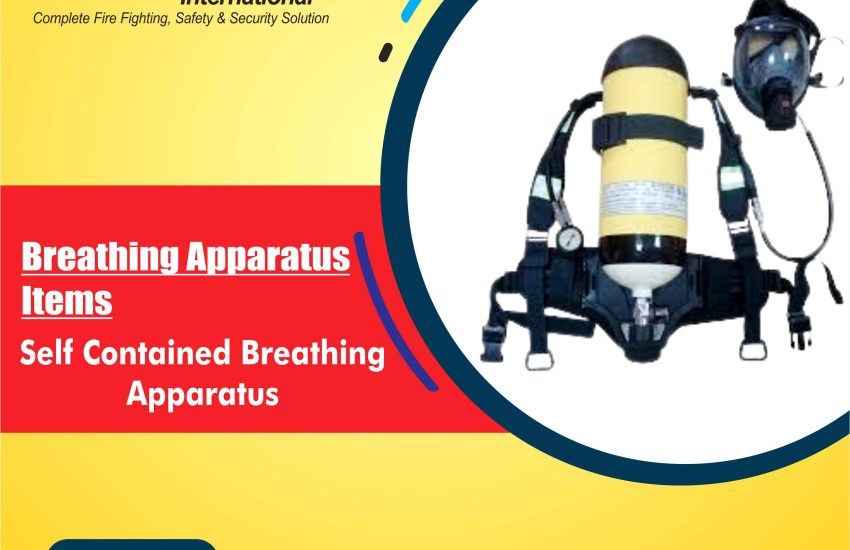Air Operated Breathing Apparatus is essential safety equipment for environments where access to breathable air is limited. These devices supply life-saving air in industries like firefighting, industrial work, and rescue operations. If you’re considering investing in an AABA, this guide will cover its features, benefits, and how to choose the best system.
What is an Air Operated Breathing Apparatus?
An Air Operated Breathing Apparatus (AABA) is a respiratory protection device that provides clean air to users in hazardous environments. Powered by compressed air, the apparatus ensures a constant air supply, essential in confined spaces or places with toxic gases. Industries like firefighting, rescue teams, and industrial settings use these systems.
Key Features of Air Operated Breathing Apparatus
- Continuous Air Supply The AABA delivers a constant flow of clean air through an air compressor or pressurized cylinder. This supply is crucial in environments with low oxygen or high contamination.
- Comfortable Fit The mask fits securely over the user’s face, and adjustable straps provide comfort. The head harness keeps the mask in place, even in challenging environments.
- Durability Air Operated Breathing Apparatus systems are built with tough materials to withstand wear, impact, and corrosion. These systems perform reliably even in harsh conditions.
- Regulated Airflow Advanced regulators control airflow, ensuring users receive a steady, safe supply of air, avoiding over-pressurization or under-pressurization.
- Versatility AABA systems come in various models, suited for different environments. You can choose from full-face or half-face masks, depending on the level of protection you need.
Benefits of Using an Air Operated Breathing Apparatus
- Increased Safety The AABA ensures a steady air supply and prevents exposure to harmful gases, toxic environments, or low-oxygen conditions, reducing the risk of suffocation or poisoning.
- Improved Efficiency Workers can focus on their tasks without worrying about running out of air. The continuous airflow allows workers to stay in hazardous areas for longer, boosting productivity.
- Reduced Fatigue With the AABA’s comfortable fit, workers experience less strain on their neck and face. This is particularly important for long shifts or emergency situations.
- Clear Visibility Many AABA masks come with anti-fog lenses for better visibility, crucial when working in smoke-filled or dark environments.
- Easy Maintenance With proper care, an AABA lasts for years. Most systems have easily replaceable parts, ensuring long-term reliability.
How to Choose the Right Air Operated Breathing Apparatus
When selecting an AABA, keep these factors in mind:
- Application Different tasks need specific features. For example, firefighters require masks with heat resistance, while industrial workers need a breathable air supply for long periods. Choose based on your environment.
- Mask Type AABA systems include full-face or half-face masks. Full-face masks offer complete protection, while half-face masks might be sufficient for specific tasks.
- Air Supply Capacity Ensure the air supply capacity matches the duration of your tasks. Choose between air cylinders or external compressors based on your work conditions.
- Comfort and Fit Look for adjustable straps and a head harness for a secure, comfortable fit. A mask that fits well prevents leaks and improves effectiveness.
- Weight Choose a lightweight AABA to minimize strain, especially for long shifts or emergency situations.
- Maintenance Requirements Consider how easy it is to maintain the apparatus. Choose a system with simple designs and readily available parts for easier upkeep.
Types of Air Operated Breathing Apparatus
- Self-Contained Breathing Apparatus (SCBA) An SCBA is portable and includes a compressed air cylinder attached to the mask. Firefighters and rescue teams often use it for environments with no breathable air. SCBAs are mobile and provide freedom during hazardous operations.
- Airline Respirators These respirators connect to an external compressed air supply via a hose. They are ideal for industrial environments where a constant air supply is available.
- Escape Breathing Apparatus This type of AABA provides short-term air during emergencies, such as evacuations. It’s designed for quick escapes from toxic or low-oxygen environments.
How to Maintain Your Air Operated Breathing Apparatus
Proper maintenance ensures reliable performance. Here’s how to care for your AABA:
- Inspect Regularly Check the mask, hoses, and regulator for signs of wear or damage. Ensure the air cylinder maintains proper pressure.
- Clean After Each Use Clean the mask after every use to remove dirt, saltwater, or chemicals. Use mild cleaning agents to prevent damage to the components.
- Check the Air Supply Ensure the air supply is at optimal levels and that the air flow remains consistent. Perform regular tests to ensure proper functioning.
- Professional Servicing Schedule professional servicing to ensure the system works efficiently. This is especially important for parts like regulators, valves, and cylinders.
Conclusion
An Air Operated Breathing Apparatus (AABA) is critical for workers in hazardous environments. Whether in firefighting, industrial work, or rescue operations, an AABA ensures access to breathable air, protecting against suffocation or exposure to harmful substances. By considering the factors outlined in this guide, you can select the best AABA for your needs and keep it in top condition.


